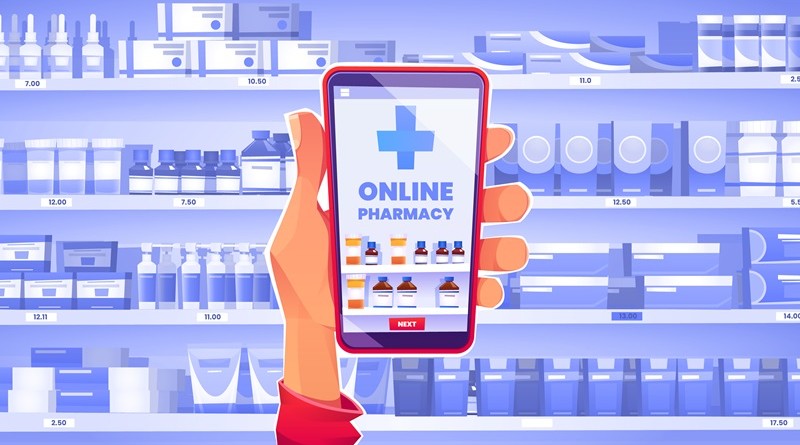Patient Data Safety for Canadian Pharmacies
As Canadian pharmacies embrace a digital transformation—offering virtual consultations, online prescription renewals, and cloud-based management systems—new opportunities for efficiency and accessibility have emerged. However, this shift has also exposed pharmacies to significant cybersecurity risks, threatening the sensitive patient data they handle daily. With cyberattacks on healthcare systems escalating, pharmacies must prioritize robust security measures to maintain patient trust and comply with regulatory expectations.
Rising Cyber Threats in Healthcare
The National Cyber Threat Assessment 2024-2025 highlights a surge in ransomware attacks targeting Canada’s healthcare sector, with pharmacies particularly vulnerable due to their reliance on interconnected systems. Unlike larger healthcare institutions, community pharmacies often lack dedicated cybersecurity teams, yet they manage sensitive information, including medication histories, diagnostic results, insurance details, and personal health numbers. A single breach can compromise thousands of patient records, erode trust, and incur significant financial and reputational costs.
“Pharmacies weren’t built as digital-first businesses,” explains Abadir Nasr, a Canadian pharmacist with extensive experience in digital health systems. “As we adopt virtual services and cloud storage, we’re fully integrated into the digital health ecosystem. That comes with a critical responsibility to protect patient data.”
Vulnerabilities in Digital Tools
Many digital tools used by pharmacies, such as apps and websites for prescription management or telepharmacy, prioritize convenience over security. Common issues include outdated encryption protocols, data storage in jurisdictions with lax privacy laws, or insufficient vendor oversight. These gaps create exploitable entry points for cybercriminals. For instance, a compromised third-party platform used for virtual consults or home delivery could expose sensitive patient information on a massive scale.
Human error further compounds these risks. Pharmacists and technicians, while experts in patient care, often lack formal cybersecurity training. Simple mistakes—clicking phishing links, reusing passwords, or failing to update software—can lead to devastating breaches. “Cybersecurity isn’t just technical; it’s about building a culture of awareness,” Nasr emphasizes. “Basic practices like two-factor authentication or recognizing phishing attempts can make a huge difference, but they require consistent training.”
Regulatory Challenges and Fragmentation
Canada’s data privacy framework, governed by the Personal Information Protection and Electronic Documents Act (PIPEDA), sets baseline standards but lacks uniform enforcement across provinces. This fragmentation leaves pharmacies to navigate complex compliance requirements without clear guidance. Many rely on software vendors’ security claims, which may not align with best practices or adequately protect patient data.
Nasr advocates for proactive internal policies: “Pharmacies don’t need to be tech experts, but they must ask critical questions: Is this system secure? Who can access the data? What’s the plan if a breach occurs? Without these discussions, adopting new tools is a gamble.”
Building a Cybersecurity Culture
To mitigate risks, pharmacies must foster a cybersecurity-first mindset. This includes:
- Staff Training: Regular education on identifying phishing attempts, securing login credentials, and updating software.
- Vendor Due Diligence: Evaluating third-party platforms for compliance with Canadian privacy laws and robust security standards.
- Incident Response Plans: Preparing for breaches with clear protocols to minimize damage and restore operations swiftly.
- Investment in Security Tools: Leveraging healthcare-specific cybersecurity solutions, such as encrypted databases and secure communication platforms.
The Canadian cybersecurity market is projected to grow significantly, with healthcare-focused tools in high demand through 2030. However, technology alone isn’t enough. Without proper training and governance, even advanced tools can fail to protect patient data.
The Evolving Role of Pharmacies
Pharmacies are expanding beyond traditional dispensing, taking on roles in chronic disease management, vaccinations, and virtual care. This evolution increases the volume and sensitivity of data they handle, making them prime targets for cyberattacks. A breach not only risks patient privacy but also undermines the trust that pharmacies rely on to deliver care.
“Digital tools empower pharmacists to provide more personalized care,” Nasr notes. “But with that power comes a new duty to safeguard patient data as diligently as we manage their health.”
Call to Action
To thrive in the digital era, Canadian pharmacies must integrate cybersecurity into their core operations. This means investing in training, adopting secure technologies, and fostering a culture of vigilance. Regulatory bodies should also work toward standardized guidelines to support pharmacies in navigating this complex landscape. By prioritizing data protection, pharmacies can uphold patient trust and ensure the benefits of digital health outweigh the risks.
For more information on securing digital health systems, pharmacies can consult resources from Health Canada or explore cybersecurity solutions tailored to healthcare.









